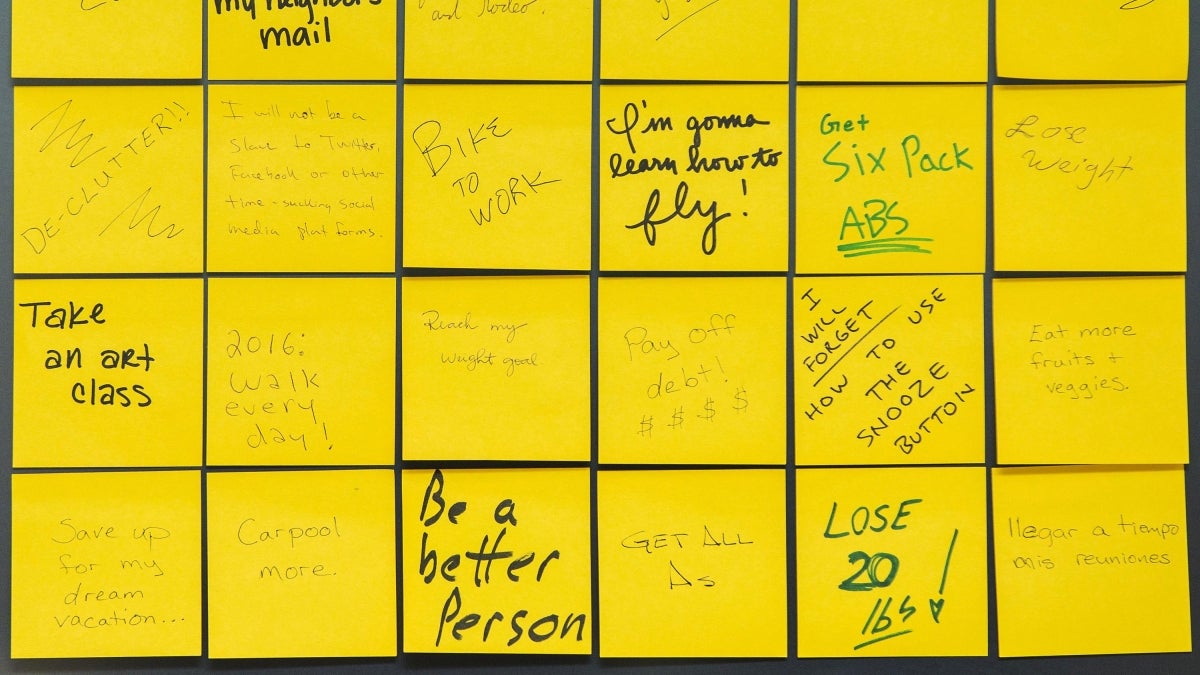It's the middle of January. How are those New Year's resolutions going?
If you're like most people, they're swiftly receding from memory. According to Forbes, 63 percent of Americans make resolutions, but only 8 percent keep them.
So why do we bother, year after year, if the failure rate is so high?
Paul Karoly, a psychology professor at Arizona State University, might know why. Karoly studies goals and motivation and claims a resolution is just a cultural function.
“What is a New Year's resolution? It’s a meme,” Karoly said. “It’s a culturally given thing. ‘Why don’t I lose weight, or get healthier?’ It has very little meaning besides that."
Karoly said the reason why we make them is because it's in line with Skinner’s Verbal Operant: where people enjoy praise — especially drunk people — and resolutions are an insincere way to get praise.
“You get drunk, you're with drunk people. You say something positive like ‘I am going to lose weight!’ and then everybody congratulates you for thinking that,” Karoly said. “Then you sober up and say, 'Tomorrow I’ll do that,' and you never do it.”
Even if you weren’t knocking a couple back when you made the resolution, adding onto a goal’s nearly inevitable failure is the abstinence violation effect, referring to a person's sense of loss of control over his or her behavior that has an overwhelming and demoralizing effect. For example, if you made a resolution to stop eating chips and you have one chip, you proceed to have the full bag because you already failed by eating one.
When applying it to other common resolutions like “go to the gym four times this week” or “quit smoking,” it becomes evident how easy it can seem to fail.
However, Karoly does think there is one way to make those resolutions stick: by making them “SMARTSpecific: It's not enough to say “I want to get a degree.” It’s vague, and changeable. Instead say something specific like, “I want to get my bachelor's in mass communications at ASU.” /// Measurable: A measurable statement would be “I’ll get my bachelor's by spring 2018.” /// Achievable/action-oriented: What are the specific steps? Try something like, “I will take this certain set of classes to get my associate's by the end of summer, leading into my degree at ASU.” /// Relevant: Ask yourself how important this is to you and your life. /// Time-related: Know the timetable for your goal; every goal needs a beginning, a middle and an end. .” Karoly is referring to the acronym for: Specific, Measurable, Attainable (or Action-oriented), Relevant (or Realistic) and Time-bound. It was created as a planning model to help realize goals that can be used year-round.
However, he still finds the process of New Year’s resolutions a bit misleading — and a waste of time.
“New Year’s resolutions are an example of weak intentions. Let's do something else,” Karoly said. “Make them lasting. If we were to make them last, if we had to, let's make it realistic. Let's make it smart.”
More Science and technology

Indigenous geneticists build unprecedented research community at ASU
When Krystal Tsosie (Diné) was an undergraduate at Arizona State University, there were no Indigenous faculty she could look to in any science department. In 2022, after getting her PhD in genomics…

Pioneering professor of cultural evolution pens essays for leading academic journals
When Robert Boyd wrote his 1985 book “Culture and the Evolutionary Process,” cultural evolution was not considered a true scientific topic. But over the past half-century, human culture and cultural…

Lucy's lasting legacy: Donald Johanson reflects on the discovery of a lifetime
Fifty years ago, in the dusty hills of Hadar, Ethiopia, a young paleoanthropologist, Donald Johanson, discovered what would become one of the most famous fossil skeletons of our lifetime — the 3.2…
